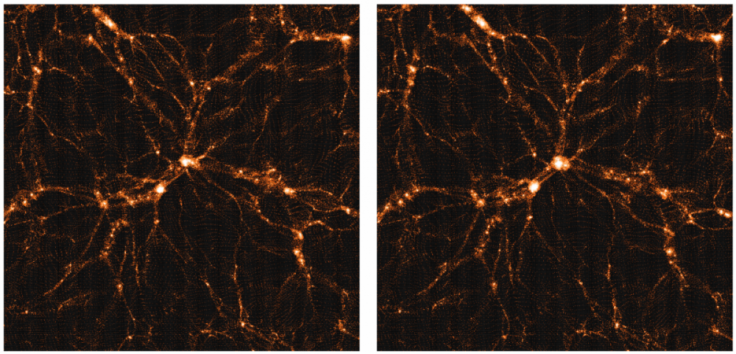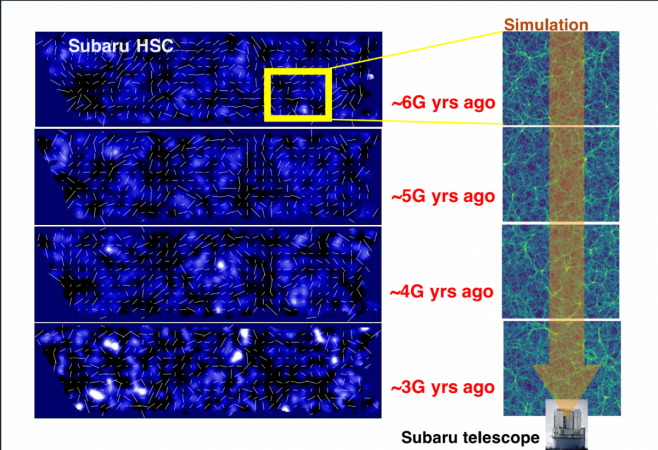
Dark energy and dark matter make up about 95 percent of the matter in the observable universe. Dark matter is responsible for the creation of stars, galaxies, and galaxy clusters, and dark energy is a mysterious force that causes the universe to expand and now astronomers might actually have a detailed map as to where dark energy and matter are actually located.
Using Einstein's general theory of relativity, an international team of researchers have attempted to measure the "lumpiness" of dark matter across the Universe, notes a release put out by the University of Tokyo's Kavli Institute for the physics and mathematics of the universe (Kavli IPMU). By analysing 10 million distant galaxies, the team attempted to understand dark energy better.
The study wanted to look into why dark particles make up a majority of all matter in the universe. The reason behind this number being so big—95 percent of the universe—is a mystery to date. To explain the behaviour of dark energy and look into the fate of the whole Universe, researchers must first find out exactly what dark matter and dark energy are because science, as of now does not have any idea what it is and it has never really been seen or observed before.

Studies to measure the amount of dark matter have, as reported, been attempted in the past. By looking billions of light years away, astronomers are essentially looking into the past, into a much younger universe the European Space Agency's Planck satellite, for example, is one such observatory. Dark energy should, based on how it works, affect the growth rate of these galaxies through time. This time would be looking at these same galaxies as they are now. If successful, this difference can say a lot about dark energy.
"Fluctuations measured by Planck are like a precise arrow shot from the early Universe, and we have measured where the arrow landed with Subaru Hyper Suprime-Cam," said paper author Surhud More of the Inter-University Center for Astronomy & Astrophysics.
That is exactly what the researchers have been studying, notes the release. The Hyper Suprime-Cam Survey uses an 820-megapixel sensor attached to an 8.2-meter-wide Subaru telescope placed on the summit of mount Maunakea. From the observatory, astronomers peer deep into space, at galaxies billions of light years away.
Einstein's theories of general relativity also spoke of gravitational lensing where gravity in space can actually bend the path of light, making far away objects appear bulged and distorted to observers from Earth.
Researchers from all over the world, including Japan, Taiwan, and the US, led by Chiaki Hikage of Kavli IPMU, studied these distortions in light caused by gravity and tried to reconstruct where in the Universe matter is distributed.
The team, have, as a result of the study pieced together a map of the regions where fluctuations of dark matter have changed over a scale of billions of years as well as see, how dark energy has urged its growth.
"I had a long-cherished hope to undertake high precision cosmology research such as that enabled by WMAP and Planck. I am very excited to share the measurements of the growth of dark matter structures in the Universe with great accuracy using Subaru HSC data," said Hikage.
The team have made their paper available to read and will reportedly be submitting their findings to the Publication of Astronomical Society of Japan (PASJ) for peer review.









